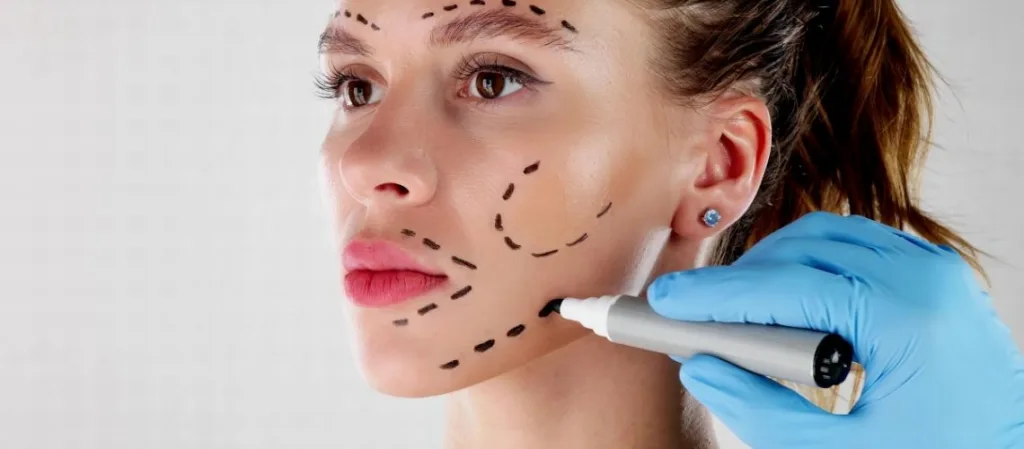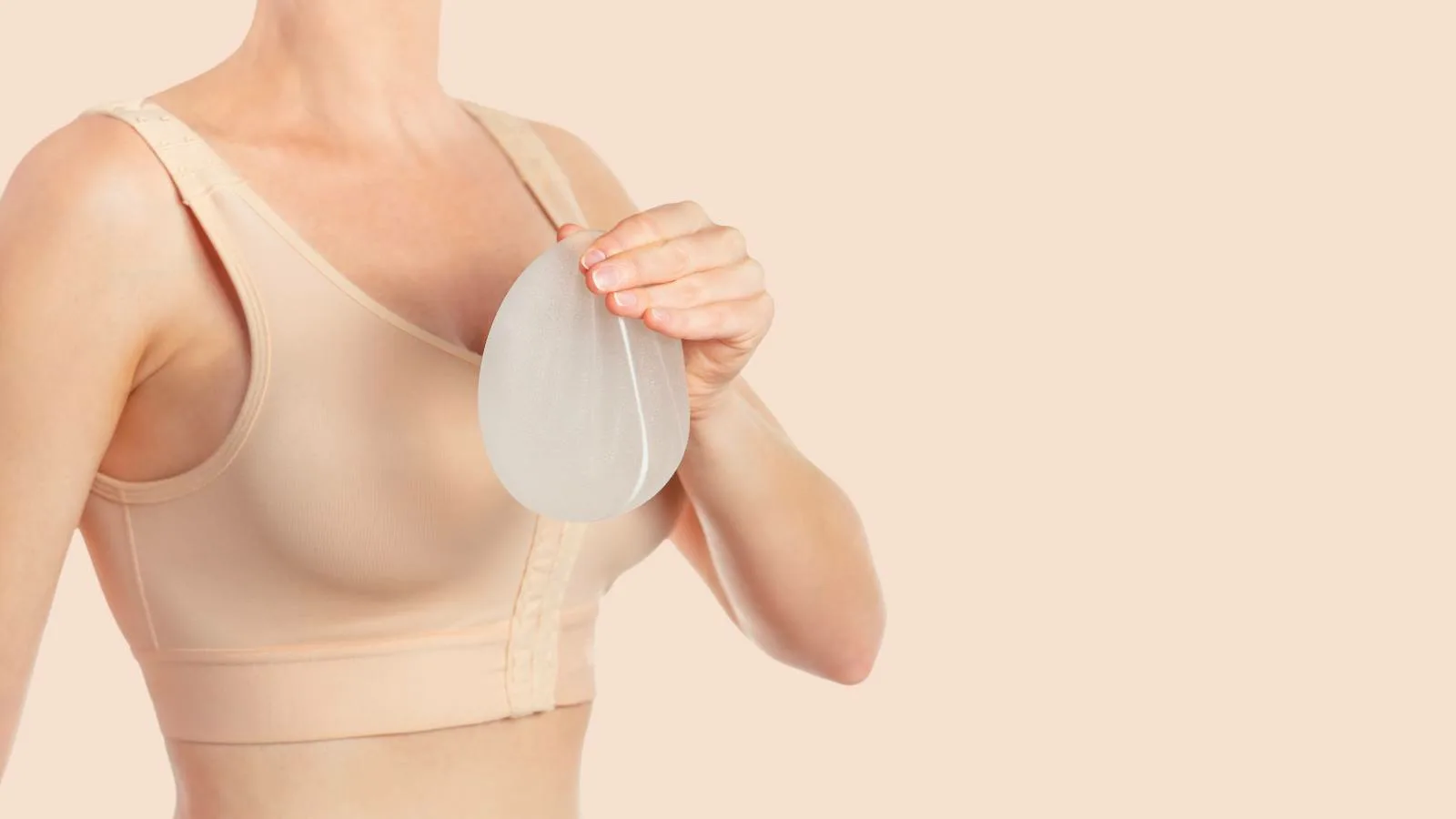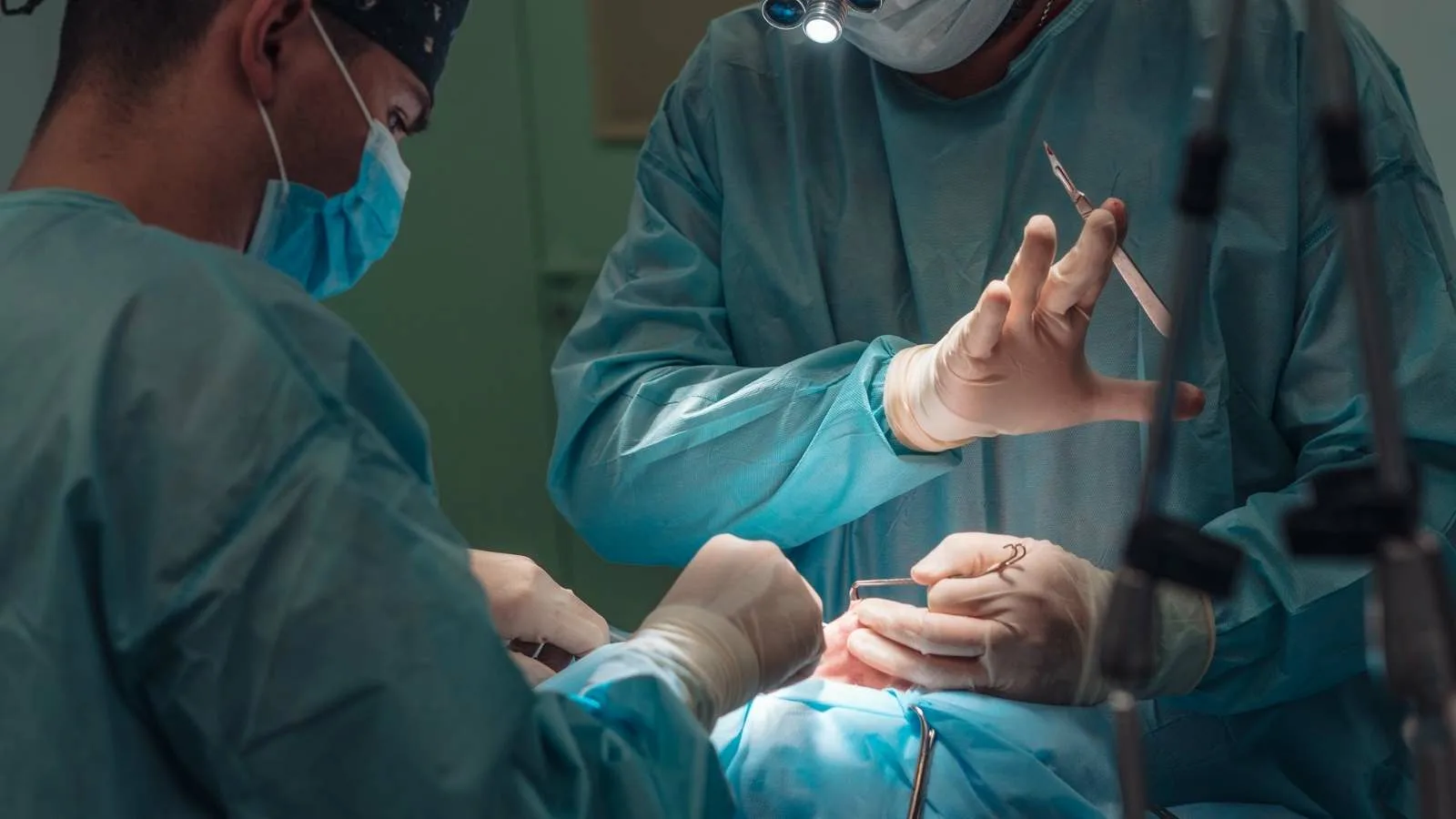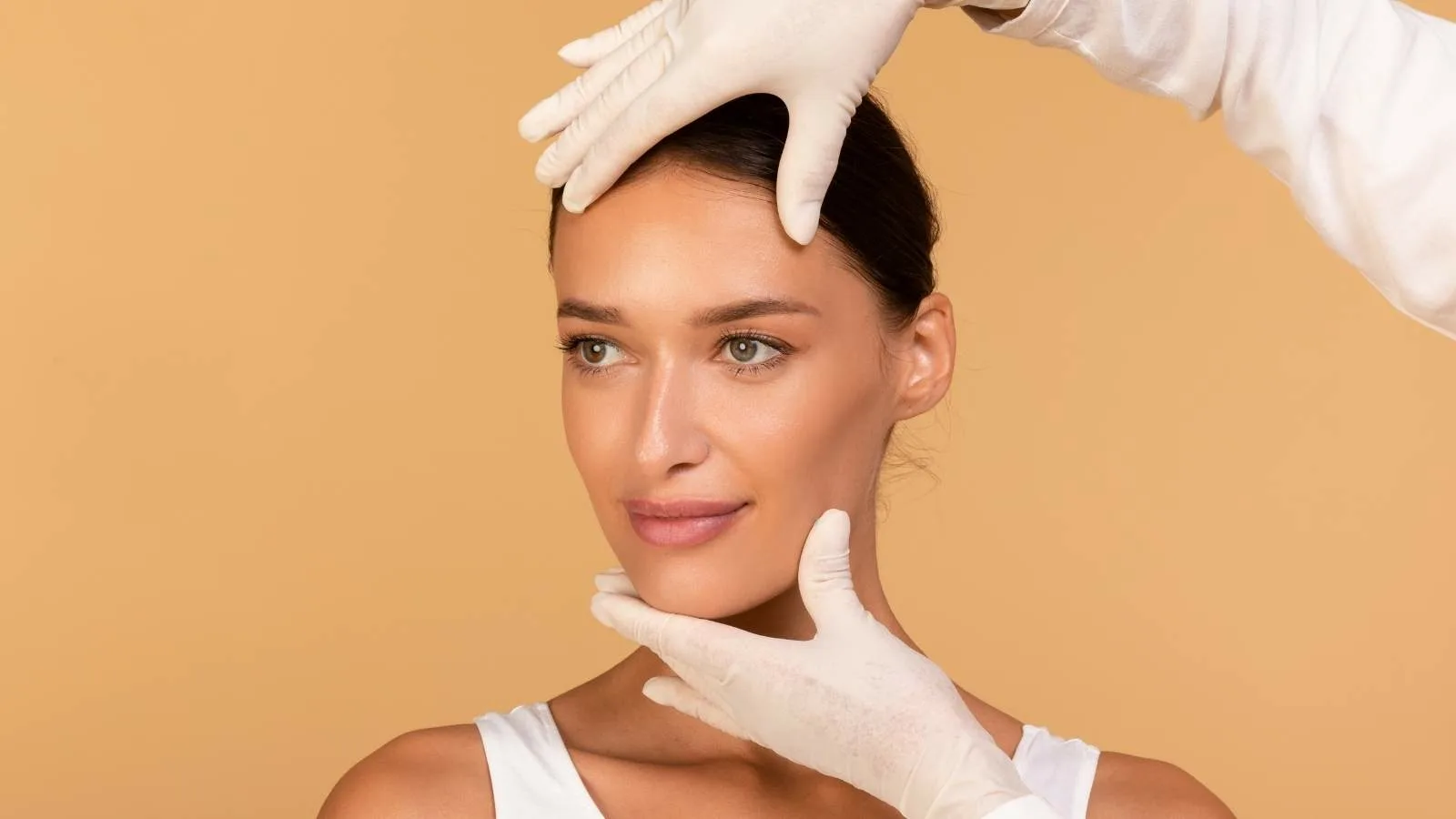Plastic surgeries that can be applied to the face at the same time include rhinoplasty, eyelid surgery, facelift, and chin augmentation. Combining procedures can achieve balanced, harmonious aesthetic results.
Benefits of combined facial surgeries include reduced overall recovery time and a single anesthesia session. Careful planning is required to ensure safety and optimal outcomes.
Risks of multiple face surgeries involve longer operating time, higher swelling, and increased need for close follow-up. Individual health status must be thoroughly evaluated before combining procedures.
Postoperative recovery after simultaneous facial surgeries requires diligent care. Patients should follow medical advice, avoid trauma to the face, and attend regular check-ups to monitor healing.
Which Aesthetic Surgeries Are Commonly Combined with a Facelift in the Facial Area?
A facelift (rhytidectomy) is a popular surgical method that tightens skin and muscle tissue loosened by time, giving a more youthful expression. This procedure mainly targets sagging and wrinkles around the jawline, cheeks, and mouth. Yet when the face is considered as a whole, merely excising excess tissue and pulling skin taut may not be enough. For this reason, additional aesthetic procedures can be performed during the same session as a facelift.
While a facelift firms the lower face and jawline, blepharoplasty is often chosen if sagging or bags are present in the upper or lower eyelids to create a harmonious overall appearance. Because the skin around the eyes is very thin, aging signs show up quickly there. By removing excess skin and fat, eyelid surgery yields a fresher gaze. Moreover, the incision is hidden in natural creases, so scars are usually minimal.
- Brow Lift
A facelift targets the middle and lower face, yet drooping brows can leave the upper face looking tired. A brow-lift operation can partially smooth forehead lines and reposition sagging brows. It is frequently performed with an endoscopic technique, placing small incisions behind the hairline to elevate the brows to an ideal position.
- Neck Lift
Complaints such as “I had a facelift but my neck still looks saggy” arise because the skin of the face and neck loosens similarly. Submental fat, double chin formation, and lax neck skin can be corrected by a neck lift. When a neck lift is added to a facelift, a smoother, firmer transition from the jawline to the neck is achieved.
Because the nose sits squarely in the center of the face, it heavily influences overall expression. A large, crooked, or functionally problematic nose may not match a rejuvenated face after a facelift. Rhinoplasty can adjust nasal size, shape, and angles, creating harmony between the nose and jawline while also resolving functional issues such as airway obstruction.
With time, fat in certain facial areas diminishes, leaving the face flat and deflated. Even if a facelift tightens the skin, a lack of volume can undermine a fully refreshed look. In fat transfer, fat harvested from the patient’s own body (for example the abdomen or thighs) is processed and injected into hollow areas of the face. When combined with a facelift, it can give the cheekbones and lower eyelid region a fuller, more vibrant contour.
- Facial Implants (Chin or Cheek Implants)
Some people’s facial anatomy—due to genetics or weight changes—lacks definition in the cheeks or chin. When facial implants are placed along with a facelift, a more balanced profile can be achieved. For instance, a very small or retruded chin tends to accentuate aging signs. Inserting a chin implant builds a strong frame in the lower face, enhancing the facelift’s effects.
In short, while a facelift alone is effective, when paired with additional procedures such as eyelid surgery, brow lift, neck lift, or rhinoplasty, it yields more comprehensive and harmonious results. Just as different instruments in an orchestra create harmony, planning these surgeries together can elevate facial aesthetics to the highest level.
Can Rhinoplasty Be Performed at the Same Time as Other Facial Aesthetic Surgeries?
Rhinoplasty—or, informally, “nose job”—plays a key role in establishing overall facial balance. No matter how youthful the facial features appear, an overly large or disproportionate nose can draw attention. Likewise, if breathing issues exist, surgery may become essential. So can rhinoplasty be done in the same session as other facial procedures?
- Rhinoplasty and Lip Lift
Literature shows that combining nasal surgery with a lip lift yields high patient satisfaction and excellent aesthetic results. A lip lift shortens the upper lip, creating a more pronounced, youthful appearance. Especially in patients with a long nose-to-lip distance, shortening this segment markedly improves proportions. Although it lengthens total surgical time slightly, combining these procedures concentrates recovery into a single period and produces more integrated results.
- Rhinoplasty and Chin Surgery
In profile view, harmony between nose and chin is crucial. Some people’s noses look large merely because their chin is recessed; rhinoplasty alone may not meet expectations. When chin augmentation or minor contouring accompanies nasal surgery, profile aesthetics can change dramatically.
- Rhinoplasty and Eyelid Aesthetics
While reshaping the nose, it is possible to eliminate eyelid bags caused by aging. If eyelid concerns are marked and the patient desires overall rejuvenation, blepharoplasty can be performed with rhinoplasty, achieving a crisp transformation in the upper/middle face and a softer one below.
- Rhinoplasty and Hair Transplantation
Although these involve different regions, some patients wish to correct their profile while also addressing hairline recession or thinning. In theory this is possible, but one must consider greatly lengthened operative times and differing scalp-healing dynamics.
What Are the Benefits of Performing Facelift and Eyelid Surgery Together?
A “facelift” aims to tighten sagging facial tissues for a younger look. Eyelid surgery (blepharoplasty), on the other hand, removes excess skin and fat bulges around the eyes for a livelier gaze. Doing both simultaneously offers many advantages.
- Comprehensive Facial Rejuvenation
A facelift addresses the lower and midface, while eyelid surgery renews the upper face (forehead and eye area). Together they create a smoother, balanced transition between eye and cheek regions; otherwise, taut lower face tissues might contrast with sagging eyelids—undesirable both aesthetically and functionally.
- Convenience in Time and Recovery
When multiple procedures occur at once, the patient undergoes only one surgery and one anesthesia session. Hospital stay is shorter, and recovery happens in a single period. Separate surgeries might each require two to three weeks of recovery; combined surgery condenses these into one.
- Fewer Incisions, Fewer Scars
Facelift incisions are around the ear and hairline; eyelid incisions hide in upper-lid creases or just below lower-lid lashes. Combined planning lets the surgical team optimize incision placement. The patient escapes “two separate sets of incisions” and addresses multiple issues in one session.
- Functional Benefits
Excess upper-lid skin can narrow the visual field, complicating daily tasks as one ages. Combining upper-lid surgery with a facelift delivers both a refreshed look and relief from obstructing skin folds.
- A Natural, Refreshed Expression
Like refurbishing an old painting by replacing only its frame, correcting just one facial area may prove insufficient. When both the eye region and lower face are rejuvenated together, overall youthfulness becomes much more apparent. A facelift sculpts the cheeks and jawline; blepharoplasty energizes the gaze. Combined, they provide a holistic, natural transformation.
Is Fat Transfer Safe When Combined with Anti-Aging Facial Surgeries?
One of the most common aging issues is facial volume loss. When cheeks, cheekbones, and under-eye areas lose fullness, the face looks harsher and more fatigued. Fat transfer—also called autologous fat grafting—harvests fat from the patient’s own body, processes it, and injects it into deficient facial areas. Can this procedure accompany anti-aging facial surgeries?
- Safety Advantages
Because the body’s own fat is used, allergic reaction risk is virtually negligible. Among fillers, fat grafting is the most “natural.” For someone sensitive to synthetic fillers, fat transfer is a fully compatible alternative, and stem cells within the fat can revitalize treated tissues.
- Facelift, Neck Lift, and Fat Transfer
While surgeries like facelift or neck lift tighten lax tissues, fat transfer can simultaneously restore volume to hollow regions. For example, age-related flattening of the upper cheek can make the face appear older; a facelift tightens lax tissue, while fat grafting re-contours the area.
- Recovery Advantages
Both procedures occur in one session, so the patient experiences only one recovery. The liposuction needed for fat harvest (e.g., from abdomen or hips) uses the same anesthesia—a practical approach. Although bruising and swelling are natural with combined surgeries, diligent care and adherence to medical advice usually bring rapid improvement.
- Long-Term Effects
Some of the transferred fat is reabsorbed. Experts generally state that a certain percentage remains permanently, so occasional touch-up sessions may be needed—but far less frequently than regular synthetic filler maintenance.
- Potential Risks
Multiple simultaneous procedures always demand broader planning. Combining a facelift with extensive fat transfer lengthens operative time, slightly increasing anesthesia risk. Proper site selection, tissue compatibility, and strict sterility are vital.
When performed by experienced surgeons, complication rates remain low. Fat injected into the wrong plane or in excessive amounts can cause asymmetry or lumpiness—so surgical judgment and technical skill are decisive.
Which Facial Aesthetic Surgeries Pair Well with Chin Augmentation?
“Chin augmentation,” technically called genioplasty or chin-implant placement, strengthens the facial lower frame and creates a more balanced profile. In some, a small or retruded chin pushes nose and cheeks visually forward, harming overall aesthetics. Which other facial procedures combine well with chin augmentation?
- Facelift
The chin plays a key role in facelift outcomes. If aging has brought jowl sagging and the chin lacks volume, adding chin augmentation to a facelift yields a more youthful, balanced lower face. While the facelift tightens loose skin and muscle, a chin implant or bone reshaping reinforces lower-face contour.
- Neck Lift
The chin and neck affect each other directly, like adjacent rooms. A small chin can make a double chin more pronounced. When chin augmentation accompanies a neck lift, the neck looks firmer, and chin-neck harmony improves, eliminating lower-face and neck fullness for a younger silhouette.
- Rhinoplasty
Nose and chin together govern profile balance. In a face with a protruding or long nose, a weak chin appears further retruded, and vice versa. Patients with nasal deformity and retruded chin can plan both surgeries together for a harmonious profile.
- Cheekbone (Malar) Implants
While widening the chin, volume deficiency in the midface (cheekbones) can cause imbalance. Combining chin and cheek implants balances mid- and lower-face proportions—like an artist enriching a painting with diverse tones.
- Fat Injection
If other facial regions also lack volume, fat grafting can accompany chin augmentation. For instance, while defining the chin, adding modest volume to the cheeks reshapes facial features softly yet proportionally.
How Does Ear Aesthetics Combine with Other Facial Procedures?
Ear aesthetics (otoplasty) addresses prominent ear deformity or asymmetry. Although ears lie behind the face, disproportionate or very prominent ears affect self-confidence significantly. What happens when otoplasty is combined with other facial surgeries?
- Rhinoplasty and Otoplasty
The nose’s central position and ear protrusion together shape facial balance. Viewed from the front, overly forward-curved ears widen the facial outline. Combined with nasal deformity, harmony suffers. Concurrent rhinoplasty and otoplasty correct these issues in a single session, attaining coherence in both central and peripheral areas.
- Facelift and Otoplasty
Facelift incisions often curve around the ear; otoplasty uses incisions behind the ear. If a patient planning a facelift also dislikes prominent ears, both surgeries can exploit similar incision sites. The combined procedure corrects ear position while lifting sagging facial tissues. Scars are optimized, and the recovery period is consolidated.
- Blepharoplasty and Otoplasty
Eyelid surgery and ear aesthetics treat different zones, yet some patients complain about both upper-face sagging and ear shape. They can be done in the same session, streamlining surgery and recovery. Still, because they affect separate regions, extra coordination and careful postoperative care for both eyes and ears are essential.
- Advantages and Points to Note
Combining otoplasty with other facial surgeries yields consistent facial improvement. Reducing ear prominence shifts attention to the face’s central zone, highlighting nose, eyes, and mouth.
What Are the Risks of Performing Multiple Facial Surgeries at Once?
Advances in aesthetic surgery now allow multiple facial operations in one session—for instance, a facelift, eyelid surgery, and chin implant together. Despite time and recovery benefits, combined operations carry specific risks.
- Prolonged Operative Time
Multiple simultaneous procedures can stretch surgery beyond four to five hours, increasing anesthesia duration and risks of thrombosis, infection, and respiratory issues.
- Increased Tissue Trauma
Simultaneous interventions on different facial zones mean the body must heal multiple sites at once. Swelling, bruising, and discomfort may be greater, particularly if surgical areas lie close together.
- Risk of Hematoma and Seroma
Multiple incisions and dissections raise the likelihood of blood or fluid accumulation, possibly necessitating additional intervention. Hematomas cause pain, swelling, and infection risk.
- Blood Supply and Healing
Extensive facial surgery can temporarily impair blood flow, risking tissue necrosis. While rare, the theoretical risk rises with broader interventions.
- Aesthetic Harmony and Asymmetry
Operating on multiple regions demands meticulous planning and measurement. A minor asymmetry in one area can affect overall harmony—especially when facelifts are combined with chin implants or rhinoplasty.
- Prolonged Recovery and Care Burden
Handling everything at once may seem appealing but intensifies postoperative care. Extensive attention to various facial zones can delay return to daily life. Lack of proper support or rest elevates complication risk.
Can Surgical and Non-Surgical Treatments Be Combined in Facial Aesthetics?
Facial aesthetics encompasses more than surgery. Botox, fillers, chemical peels, and laser treatments are common non-surgical options. Can these be done alongside surgery?
- Post-Surgical Fillers and Botox
After a facelift, residual fine lines beside the lips or dynamic forehead wrinkles can be eased with Botox. Similarly, hyaluronic-acid fillers can tweak small deficiencies when fat transfer is unsuitable. Such treatments are generally performed after a period of healing, not concurrently with surgery.
- Laser and Chemical Peeling
To renew skin and reduce blemishes, acne scars, or fine wrinkles, laser or chemical peels can help. Many surgeons prefer these after substantial postoperative healing rather than during the same session, to avoid stressing already traumatized skin.
- Combined-Planning Advantages
When chosen wisely, non-surgical methods can boost or maintain surgical results. For instance, minor asymmetries after rhinoplasty can be corrected with filler injections—perfection through subtle, non-surgical touches.
- Timing and Dosage
Injections like Botox need periodic repetition; swelling after surgery can obscure anatomy and dosage accuracy, so they are usually planned once healing has advanced.
- Clinical Practice and Tailored Approaches
Depending on skin type, healing speed, and desired outcome, surgery and non-surgical methods can be combined differently. Some patients may undergo just blepharoplasty then use Botox for forehead lines; others may need laser treatments for sun damage after a facelift. Determining the correct sequence and techniques is crucial.
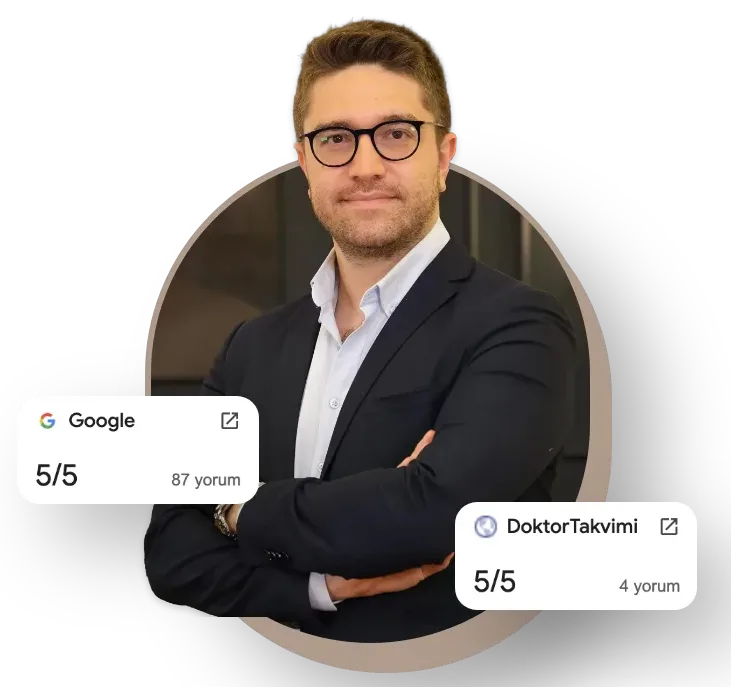
Op. Dr. Erman Ak is an internationally experienced specialist known for facial, breast, and body contouring surgeries in the field of aesthetic surgery. With his natural result–oriented surgical philosophy, modern techniques, and artistic vision, he is among the leading names in aesthetic surgery in Türkiye. A graduate of Hacettepe University Faculty of Medicine, Dr. Ak completed his residency at the Istanbul University Çapa Faculty of Medicine, Department of Plastic, Reconstructive and Aesthetic Surgery.
During his training, he received advanced microsurgery education from Prof. Dr. Fu Chan Wei at the Taiwan Chang Gung Memorial Hospital and was awarded the European Aesthetic Plastic Surgery Qualification by the European Board of Plastic Surgery (EBOPRAS). He also conducted advanced studies on facial and breast aesthetics as an ISAPS fellow at the Villa Bella Clinic (Italy) with Prof. Dr. Giovanni and Chiara Botti.
Op. Dr. Erman Ak approaches aesthetic surgery as a personalized art, tailoring each patient’s treatment according to facial proportions, skin structure, and natural aesthetic harmony. His expertise includes deep-plane face and neck lift, lip lift, buccal fat removal (bichectomy), breast augmentation and lifting, abdominoplasty, liposuction, BBL, and mommy makeover. He currently provides safe, natural, and holistic aesthetic treatments using modern techniques in his private clinic in Istanbul.

